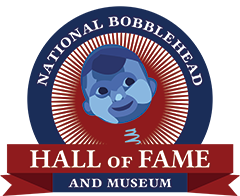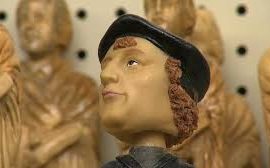
The View From Section 416: Hunting for home runs with Wrigley Field’s famed ballhawks By Dave Davison
you want a taste of Wrigley history, stop at the corner of Waveland and Kenmore Avenues, beyond the left-field bleachers. There you’ll find the ballhawks, a group of Cubs fans who hang out with their baseball gloves on — from before batting practice until after the final out — hoping to snag a home run ball from beyond the ivy.
I spoke with a couple of them before a recent game: Rich Buhrke, who’s been chasing glory for 57 years, and Dave Davison, with a mere three decades on the job.
I watch them scan the skies; the stiff north-by-northwest winds suggest slim pickings during the night’s game, and with no batting practice scheduled, it’ll be slow. So they have time to chat.
My first question:
Buhrke’s answer is as pure and simple as a game of catch: “I’ve had so much fun — since I was 12 years old.”
When you get a homer — on the fly or after it bounces around the crowd — he says, “For that instant, you’re part of the game, and it’s a big thrill. I still get an adrenaline rush.”
While back surgery has slowed Buhrke’s running game, it’s now all about predictions, positioning and playing the angles.
It takes deep baseball knowledge to be a ball hawk. They monitor pitchers who tend to give up lots of homers, as well as hitters’ tendencies. They can read the reactions of the crowd along the back wall of the bleachers to tell if a ball is indeed headed out of the park.
They also monitor their own statistics. Buhrke has snagged 179 in-game home runs over the years, including Ron Santo’s 299th and 300th career blasts. He has homers both given up by, and hit by, Cubs pitchers Fergie Jenkins and Scott Sanderson. He also has footballs from point-after-touchdown kicks, back when the Bears played at Wrigley. But his first home run ball might be his most memorable.
It was Don Zimmer’s first dinger as a Cub, after being traded to Chicago from the Dodgers in 1960. Zimmer hit it off his former Dodgers roommate, Johnny Podres. Buhrke got it signed, but the signature faded over the years. Decades later, he went to an autograph show to get it re-signed. There, Zimmer proceeded to tell the inside story of the home run. It came on a 2-0 pitch, a count where “the book” says a .250 hitter should take a pitch. But Zimmer swung away, and Podres gave him an earful about it all the way around the bases.
“Every time we see each other, it comes up. You gotta show him this sometime!” Zimmer told Buhrke.
So when Podres was in town for another autograph show, Buhrke brought him the ball, and said, “Don Zimmer told me to come over by you.” Podres laughed and told the same story Zimmer had.
Then he signed the other side of the ball.
The ballhawks are also famous on their own terms. There’s been a documentary film made about them, with Cubs uber-fan Bill Murray narrating, which was screened at the National Baseball Hall of Fame and Museum.
And Davison has another sort of modern fame: his own bobblehead doll. At the 2002 All-Star Game in Milwaukee, Davison snagged a ball Sammy Sosa blasted out of Miller Park during the Home Run Derby. The TV announcers discussed his feat, and years later, folks from the Milwaukee-based National Bobblehead Hall of Fame met Davison at a card show and asked him if he’d want to be immortalized. It finally happened this year, and you can buy one from Davison, along with jewelry made from baseballs he has caught.
Other developments this season, however, haven’t been as good for Davison, Buhrke and the other ballhawks.
Thanks to bleacher expansion and what Buhrke calls “That Monstrosity” — the new left-field video board — many balls that would’ve gone onto Waveland Ave. stay in the park. The hawks estimate they get 60 percent fewer balls than in past years. Beyond physical changes, manager Joe Maddon’s noted disdain for batting practice doesn’t help, either. “Maddon’s philosophy of batting practice kills us,” Buhrke says. The ballhawks know if BP will happen when the Wrigley Field grounds crew climbs up to spread the netting that protects the video board, and if it doesn’t, well, then it’s time to settle in and tell some stories.
These guys know the geography of the game’s history at the Friendly Confines, and they act as unofficial historians and ambassadors for Wrigley’s most famous home runs. Out-of-town fans come looking for the spots where famed long shots by Dave Kingman or Sosa landed on Kenmore Ave. This afternoon, some random fan sought a Mike Schmidt landing zone, and was informed that that particular ball went up the alley, not down the street.
You can find ballhawks inside the park as well: During one of the pregame videos the Cubs show on the new board, Buhrke himself appears, holding up a ball as Harry Caray shouts, “Holy Cow!” Buhrke had never seen the film until I captured an image for him, and based on his age, clothes and other clues, he says it’s from the late 1980s. He thinks it might’ve been an Andre Dawson ball, but can’t be completely sure.
This season, Davison scored the most historic out-of-the-park ball of the year to date. On May 27, backup catcher David Ross’ 100th career home run hit the “NUVEEN” sign and ricocheted into the first front yard on Kenmore. Buhrke had predicted that such caroms would come, but Davison admits he thought the sign was “mostly air” and that it wouldn’t cause any crazy bounces. He happily eats his words: “Rich was right, but so far I’m the only guy who benefited from it.”
After Davison snagged the ball, for the rest of the game the Cubs had security shadow him to ensure he wouldn’t switch the ball out for another. They needn’t have worried: Davison happily gave the ball to Ross, asking only for a photo with him. The grateful Ross praised Davison’s generosity.
“People don’t realize when they do stuff like that, it’s the memory,” Ross said to MLB.com. “I’ll always remember that guy gave me that ball and was kind enough to do that. Now that guy is connected with me for life in my memory.”
Another memorable time for the ballhawks was the steroid era, when Sosa, Mark McGwire and other sluggers sent countless balls out of the park. “It was as exciting as hell,” Buhrke says, but as a good baseball purist, he continues, “[PED use] never should’ve got into baseball, and now that it’s out, keep it out.” He advocates harsher penalties for juicers, who he says are role models, “whether they want to be or not.”
The ballhawks are role models of a sort, too, exemplars of passionate fan engagement with the game on their own terms. They attend many games, and sometimes follow the Cubs on the road. They’re part of baseball’s genuine folk culture, but over the decades they’ve watched that folk culture transform into corporate culture.
The starkest example of this transformation at Wrigley is the rooftop clubs. Before Jim Murphy put some seats on top of his tavern, you could watch the Cubs from a rooftop only if you knew someone who lived in the building. You’d clamber up a ladder to the roof, hand up a couple of folding lawn chairs, a cooler with a few cold brews and a transistor radio with Lou Boudreau and Vince Lloyd calling the game.
Nobody made a buck off it. Now, the Wrigley rooftops are quintessential corporate America, with $100 tickets that have food and drink and TVs and lawsuits flying around like fungo balls.
But the ballhawks are a living memory, a connection to Cubs fan culture before East Lakeview became Wrigleyville. They may perch beyond its walls, but they are as much a part of Wrigley Field as the ivy.

